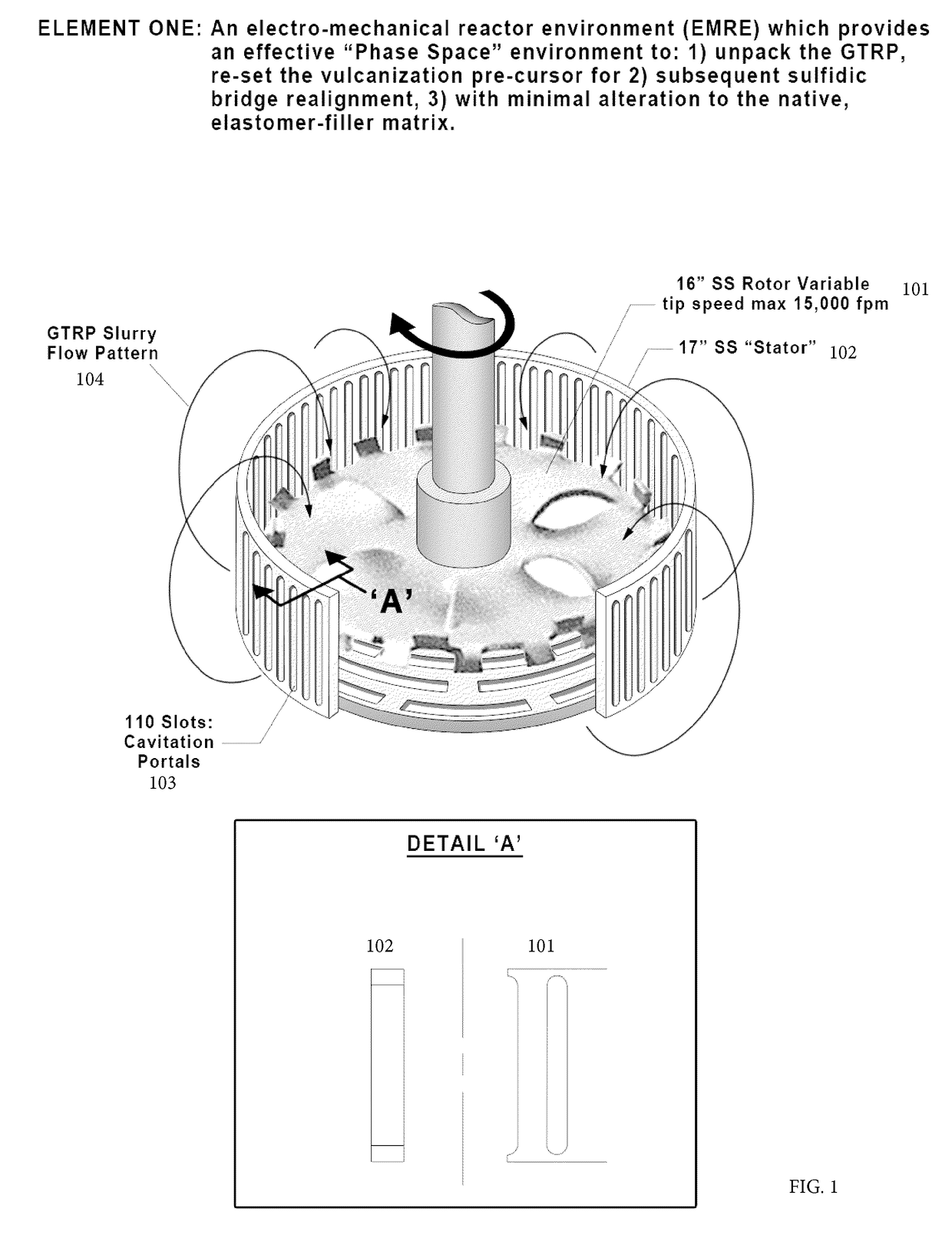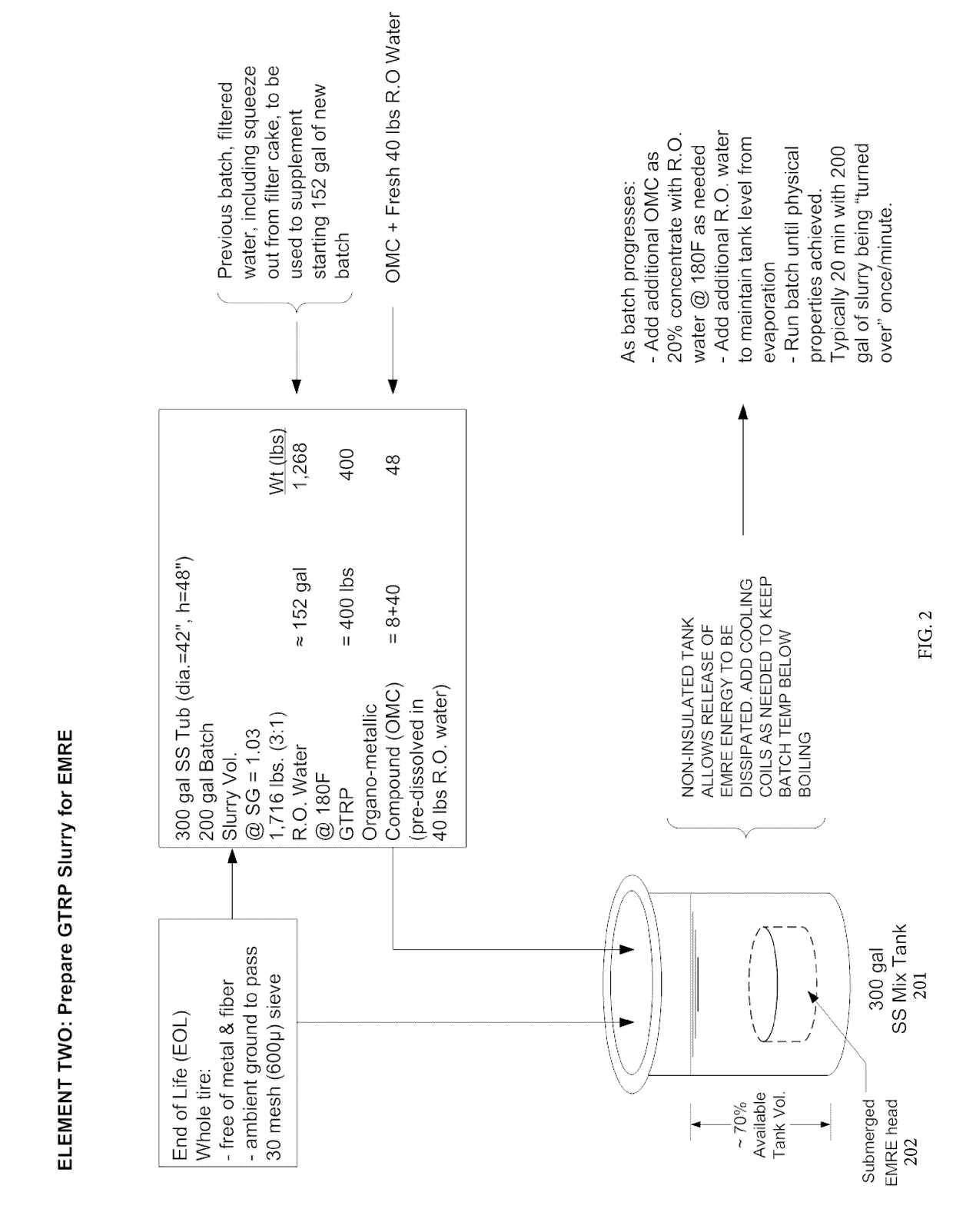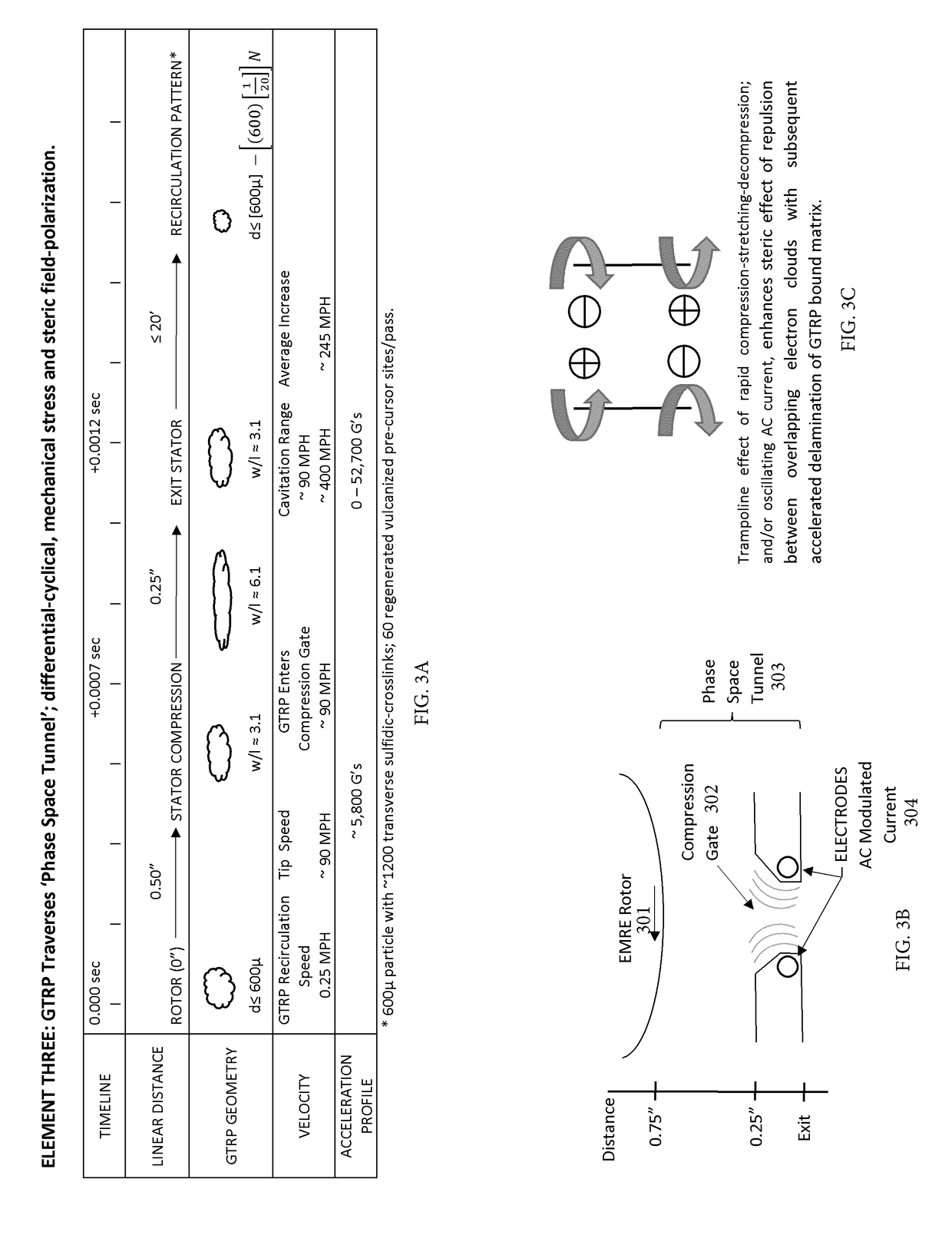Inter-penetrating elastomer network derived from ground tire rubber particles
a technology of elastomer network and ground tire, which is applied in the direction of special tyres, vehicle components, tire parts, etc., to achieve the effect of superior fatigue resistance and longer service li
- Summary
- Abstract
- Description
- Claims
- Application Information
AI Technical Summary
Benefits of technology
Problems solved by technology
Method used
Image
Examples
example 1
le Testing
[0319]The starting material was 100 g of 30 mesh whole tire cold ground tire rubber (GTR). By calculation based on typical tire composition, the starting material was estimated to comprise approximately 40% by weight rubber by weight and approximately 2.5% by weight of rubber mass of elemental sulfur (approximately 2.5 grams of sulfur; molecular weight 32.065 g / mol). Assuming that the sulfur chains between polyisoprene strands in the vulcanized rubber average 8 atoms in length, then 25% of the sulfur (0.625 g; 0.0195 mol) is assumed to be bonded directly to a polyisoprene chain, and for each of these bonded sulfur atoms, one acetate moiety (OAc) is required to replace the bonded sulfur atom. 5.0 grams of copper (II) acetate (molecular weight 181.63 g / mol) was provided for interlinked substitution (0.0275 mol of Cu(OAc)2 corresponding to 0.0550 mol of acetate ion), which was an excess of acetate to sulfur bonded directly to a polyisoprene chain (as opposed to sulfur bound t...
example 2
l Compression Reactor
[0322]The starting material was 30 mesh whole tire cold ground tire rubber. The starting material was estimated to comprise approximately 40% by weight rubber by weight and approximately 2.5% by weight of rubber mass of elemental sulfur. Copper (II) acetate in powder form was provided for interlinked substitution. The ground tire rubber and copper acetate were mixed together (4% by weight copper (II) acetate to 96% whole tire cold ground tire rubber) and then fed into a horizontal compression reactor as in FIGS. 11A-C.
[0323]After a total of 10 cycles through the reactor at 275° F. and approximately 100 psi, the particle size was reduced to <200 mesh, and after a total of 50 cycles through the reactor at 275° F. and approximately 100 psi, the particle size was reduced to approximately 1.0 μm. The resulting particles were observed to adhere to other particles, forming a film, indicative of restored side chain functionality resulting from the sulfidic scavenging pr...
example 3
pounder—Dry Reactant
[0325]The starting material was 30 mesh whole tire cold ground tire rubber. The starting material was estimated to comprise approximately 40% by weight rubber by weight and approximately 2.5% by weight of rubber mass of elemental sulfur. Copper (II) acetate in dry powder form was provided for interlinked substitution. The ground tire rubber and copper acetate were mixed together (4% by weight copper (II) acetate to 96% whole tire cold ground tire rubber) and then fed into a micro-compounder as depicted in FIGS. 12A-C, yielding a mixture of 4% by weight copper (II) acetate to 96% whole tire cold ground tire rubber.
[0326]The mixture was processed in the micro-compounder at 250° F. and approximately 80-100 psi, for a duration of approximately 1 hour, and approximately 750 g of product, comprised of rubbery particles was obtained. The elasticity of one of the particle masses was demonstrated by the mass being stretched.
PUM
| Property | Measurement | Unit |
|---|---|---|
| particle size | aaaaa | aaaaa |
| thickness | aaaaa | aaaaa |
| weight | aaaaa | aaaaa |
Abstract
Description
Claims
Application Information
 Login to View More
Login to View More - R&D
- Intellectual Property
- Life Sciences
- Materials
- Tech Scout
- Unparalleled Data Quality
- Higher Quality Content
- 60% Fewer Hallucinations
Browse by: Latest US Patents, China's latest patents, Technical Efficacy Thesaurus, Application Domain, Technology Topic, Popular Technical Reports.
© 2025 PatSnap. All rights reserved.Legal|Privacy policy|Modern Slavery Act Transparency Statement|Sitemap|About US| Contact US: help@patsnap.com



